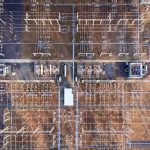Ensuring Substation Safety: The Vital Role of Seismic Qualification
In an increasingly unpredictable world, the resilience of critical infrastructure, along with the growing need for continuous energy supply, is crucial. One of the most significant threats to electrical substations, and consequently our power supply, is seismic activity. Earthquakes can inflict damage on these vital facilities, endangering both people and the equipment that keeps our lights on. This article examines the critical role of seismic qualification in safeguarding electrical substations and ensuring continuous power distribution.
Why is Seismic Qualification Essential?
Electrical substations serve as the backbone of our power grid, and their uninterrupted operation is essential for our daily lives. Here’s why seismic qualification is vital:
- Community Resilience and Prosperity
Power loss due to earthquake damage can disrupt critical services, impact public safety, reduce business profitability, and hinder economic growth in affected regions. Seismic Qualification ensures that equipment can continue to operate during and after an earthquake, maintaining a reliable power supply.
- Environmental Care
Equipment failure in a substation can lead to electrical fires, chemical leaks, or other hazardous situations that threaten the environment. Seismic Qualification minimizes these risks.
- Equipment Structural Integrity
Forces generated during an earthquake can damage or displace equipment, leading to costly repairs or replacements. Seismic Qualification can lead to cost-effective design improvements (structural modifications or even the use of seismic dampers) that make equipment more robust against such hazards.
- Preventing Maintenance Outages
Power loss due to substation failures can have extensive consequences. Seismic Qualification helps identify vulnerabilities and prevent equipment failures that could lead to maintenance outages.
- Regulatory Compliance
To operate legally and safely, many countries have imposed compliance with codes and regulations that require seismic engineering for critical infrastructure like electrical substations. Neglecting to adhere to these regulations may result in project completion setbacks.
- Insurance and Liability
Insurance companies often require evidence of seismic compliance with safety standards to provide coverage for equipment and substations. Non-compliance can result in increased insurance costs or policy cancellation.
- Risk Awareness
Seismic Qualification allows for a thorough assessment of the broader risk posed by seismic events, enabling the development of risk mitigation and emergency response plans.
Conclusion
Seismic Qualification for electro-mechanical equipment in electrical substations is essential for safeguarding both society and industry while maintaining a reliable power distribution. It not only helps prevent costly outages but also plays a vital role in ensuring the resilience of our critical infrastructure. Adhering to seismic safety standards and regulations isn’t merely an obligation; it’s a collective responsibility to ensure uninterrupted power supply, even in the presence of seismic hazards.


Leave a Reply